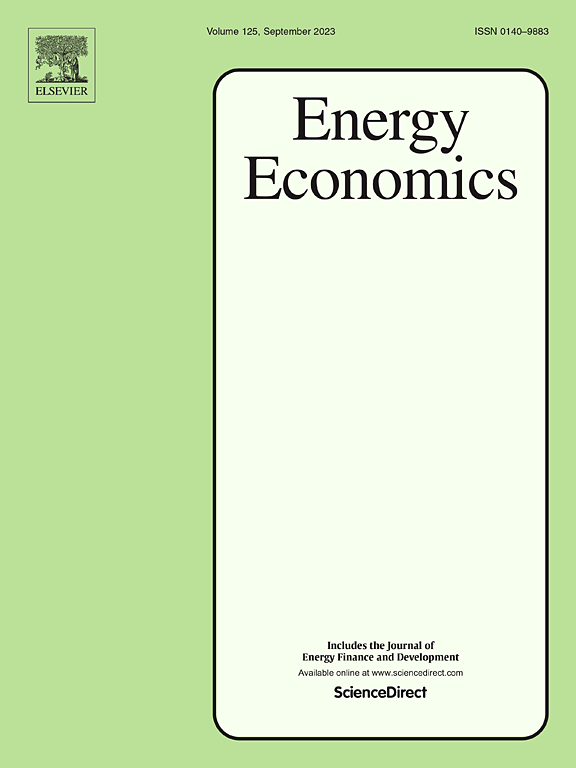老年人口迁移与城市能源消耗:自愿迁移还是被迫迁移?
IF 13.6
2区 经济学
Q1 ECONOMICS
引用次数: 0
摘要
第七次全国人口普查显示,到2020年,流动人口达到3.76亿,而离家出走的流动人口总数为4.93亿。在老龄化进程加速的背景下,受各种因素驱动的老年人迁移问题备受关注。这一不断增长的流动群体正在影响着各个地区的能源消费。本研究基于中国地级市的数据,探讨老年人口的迁移如何影响经济。研究结果表明,老年人迁移导致老龄化和迁移效应,这分别表明老年人对健康和医疗服务的需求以及他们对电力和交通的依赖显著促进了EC的增加。本研究以三种情景为重点,检验老年人口迁移驱动因素的调节效应。结果表明,家庭搬迁、代际照顾和医疗保健均有负向调节作用。在异质性分析中,我们发现农村流动人口、女性人口和和平时期出生的人口表现出更强的EC倾向。指数平滑(ETS)模型预测了欧盟的持续增长,分位数回归证实,欧盟较高的地区,移民的贡献更大。本研究以老年流动人口为研究重点,运用人口学理论对流动人口进行分析,为流动人口管理和政策制定提供新的研究方法和视角。本文章由计算机程序翻译,如有差异,请以英文原文为准。
Elderly population migration and urban energy consumption: Voluntary relocation or forced displacement?
The Seventh National Census shows that the migrant population reached 376 million in 2020, while those living away from their households totaled 493 million. Against the backdrop of an accelerating aging process, the migration of the elderly, driven by various factors, has garnered significant attention. This growing mobile group is influencing energy consumption (EC) in various regions. Based on data from China's prefecture-level cities, this study explores how the migration of the elderly population affects EC. The findings indicate that elderly migration results in both aging and migration effects, which respectively demonstrate that elderly populations' demand for health and medical services, as well as their reliance on electricity and transportation, significantly contribute to increased EC. By focusing on three scenarios, this study tests the moderating effects of factors that drive the elderly population migration. The results show that family relocation, intergenerational care, and healthcare all exert negative moderating effects. In the heterogeneity analysis, we find that rural migrants, female populations, and those born in peaceful times display a stronger tendency towards EC. The Exponential Smoothing (ETS) model predicts continued growth in EC, and quantile regression confirms that regions with higher EC see greater contributions from migrants. This study highlights the elderly migrant population and applies demographic theory to the analysis of EC, offering new research approaches and perspectives for EC management and policy development.
求助全文
通过发布文献求助,成功后即可免费获取论文全文。
去求助
来源期刊

Energy Economics
ECONOMICS-
CiteScore
18.60
自引率
12.50%
发文量
524
期刊介绍:
Energy Economics is a field journal that focuses on energy economics and energy finance. It covers various themes including the exploitation, conversion, and use of energy, markets for energy commodities and derivatives, regulation and taxation, forecasting, environment and climate, international trade, development, and monetary policy. The journal welcomes contributions that utilize diverse methods such as experiments, surveys, econometrics, decomposition, simulation models, equilibrium models, optimization models, and analytical models. It publishes a combination of papers employing different methods to explore a wide range of topics. The journal's replication policy encourages the submission of replication studies, wherein researchers reproduce and extend the key results of original studies while explaining any differences. Energy Economics is indexed and abstracted in several databases including Environmental Abstracts, Fuel and Energy Abstracts, Social Sciences Citation Index, GEOBASE, Social & Behavioral Sciences, Journal of Economic Literature, INSPEC, and more.
 求助内容:
求助内容: 应助结果提醒方式:
应助结果提醒方式:


